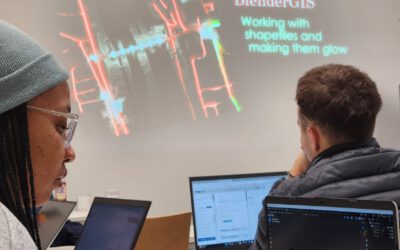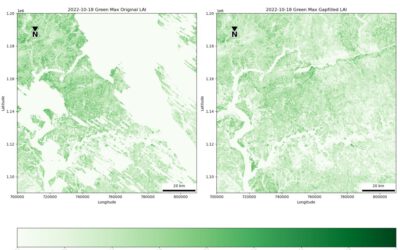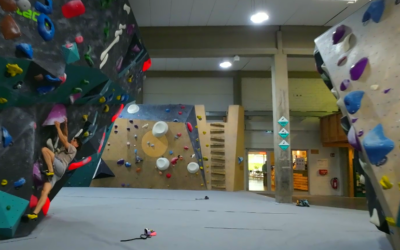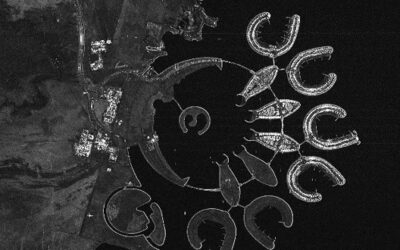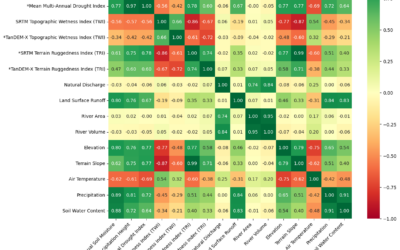Aim
In this module you will gain a detailed understanding of the advantages and challenges of Earth observation using Light Detection and Ranging (LiDAR) systems. Compared to other types of remote sensing data, the data from active Light Detection and Ranging (LiDAR) systems is of particular importance for local studies, where the 3D component (height) of objects is of relevance. Commonly LiDAR data is applied it in the field of digital terrain modelling, in forestry – e.g. for canopy height assessment, or urban structure applications. LiDAR embraces a range of active remote sensing systems mounted on different platforms, which provide valuable information for characterization of horizontal and vertical structure of the earth surface by measuring the travel time of laser pulses in visible and near-infrared spectral domains. The quality of scanning depends on the nature of the LIDAR system (discrete-return or full waveform) as well as on a set of other terrain- and data-driven factors. This course provides you with an overview on the theory and applications of LiDAR data, with a particular focus on airborne laser scanning. Following the initial theoretical sections on the principles and basic characteristics of LiDAR data, diverse practical steps and exercises will be implemented to provide real-world examples to illustrate how the LiDAR point clouds can be applied to extract information on terrain, surface and vegetation. These information will be further employed to model vegetation structural attributes on multiple spatial scales ranging from single trees to landscape levels.
Content
Block 1: Introduction to LiDAR (how does laser scanning work?)
- Reminder on general remote sensing issues: difference between active and passive sensing
- History of LiDAR measurements
- Basics of LiDAR data measurements (platforms, sensors)
- Airborne vs. spaceborne LiDAR: history, applications and data access
- Measurement of travel time of laser light (pulsed time of flight)
- On the concept of “structure”: why a third dimension is crucial?
Block 2: Principles of LiDAR measurements
- Platform navigation, orientation and positioning
- Difference between types of data acquisitions: discrete return and echo waveform
- The recorded parameters: elevation, height, signal intensity and co.
- The concept of „single-pulse“ vs. „multiple-pulse“
- How are the incoming returns recorded? first come- first served!
- Terrestrial LiDAR measurement: one position, rotating scanner
- Data formats and big data-management: each byte matters!
Block 3: Elevation models:
- General thoughts: why are the elevation models essential?
- Digital terrain models
- Digital surface models
- Normalized DSM (Canopy height models)
- Application fields: Forest, landscape and habitat representations
- Magnified focus on Forest (basic and derived parameters): Diameter at breast height, height, tree type proportions, tree type mapping, crown closure, stem count, growing stock und aboveground biomass
- Single tree measurements
- Urban: City models, roof top and building footprints
Block 4: Exercises in Open-Source domain of LiDAR data processing (Fusion/LDV, LASTools, R)
- Exercises on point cloud processing
- Import, export, visualizations and rendering
- Sample measurements, single tree measurements and associated tasks
- Elevation models
- Data trimming, cropping, smoothing and generalizing
- Catalog and descriptive communication
- Extraction of metrics for modeling purposes
- Thoughts on metrics
- Intensity: yes or no?
- Multi-scale metric extraction
- Multi-source metric extraction
- Class works and workshops (CIP-Pool/Homework)
- Literature review, discussion groups and public presentations
Coding
Coding examples and individual work will be covered
Software
Various software programs will be used, but mainly OpenSource software such as R.
Techniques
Different techniques will be introduced and practically applied.
Content
The content of scientific with regard to the audience will be discussed.
General Course News and Updates
GRASS software for Earth Observation
In our international EAGLE MSc program, we go beyond the limitations of a single programming language or software environment. Our goal is to empower students to leverage a wide range of scientific tools effectively. They gain insight into the strengths and...
Master Defense by Isabella Metz: ” Analysis of Uncertainties for Error Detection and Quantification of Bathymetry Data from Multispectral Sentinel-2 Imagery
On January 07, 2025, Isabella Metz will defend her master thesis on " Analysis of Uncertainties for Error Detection and Quantification of Bathymetry Data from Multispectral Sentinel-2 Imagery" at 13:00 in seminar room 3, John-Skilton-Str. 4a. From the abstract: In...
EAGLES rock(et) the World Space Forum 2024
Laura - 8th gen EAGLE and in the last week of her internship at UN-SPIDER - and Sunniva - 7th gen EAGLE and working as a student assistant at the DLR's space agency - together happen to help organize the World Space Forum (WSF) 2024 in Bonn. Surrounded by...
EAGLE internship at CIAT in Colombia
Leonie, an 8th generation EAGLE, is currently doing her internship at CIAT (International Center of Tropical Agriculture) in South America, Colombia. She is part of the Multifuncional Landscapes group, which investigates about soil organic carbon sequestration in...
Blender GIS introduction
Within out EAGLE Earth Observation M.Sc. we also cover software applications which might not be used on a regular basis within our field of research but are sometimes highly useful to display our spatial data in a visually appealing way - and also potentially provides...
EAGLE presentation by Gökçe Yağmur Budak
On November 26, 2024, Gökçe Yağmur Budak will present her internship results on " Leveraging Data-Driven Approaches for Seismic Risk Assessment in Istanbul " at 12:30 in seminar room 3, John-Skilton-Str. 4a. From the abstract: This internship aims to create time...
Internship presentation by Jean de Dieu Tuyizere: Mapping leaf area index in Ghana and Senegal using Gaussian process regression and Sentinel-2 Imagery
On November 26, 2024, Jean de Dieu Tuyizere will present his internship results on " Mapping leaf area index in Ghana and Senegal using Gaussian process regression and Sentinel-2 Imagery" at 12:00 in seminar room 3, John-Skilton-Str. 4a. From the abstract: This study...
social bouldering event
Last Friday did we organize again a social event for all staff members and EAGLEs to get to know the new students, meet and chat with old students and just have a nice time outside the office for all staff members. We spend 4 hours together in the Rock In boulder gym...
Innolab presentation: Deep Learning-driven Image Super-Resolution for TerraSAR-X
On November 05, 2024, Jannik Hoffmann will present his InnoLab results on " Deep Learning-driven Image Super-Resolution for TerraSAR-X" at 12:00 in seminar room 3, John-Skilton-Str. 4a. From the abstract: High-resolution satellite Synthetic Aperture Radar (SAR) data...
Master Defense: Discovering Hydrographic Parameters of HydroSHEDS and TanDEM-X Digital Elevation Model through Exploratory Data Analysis” at 12:00 seminar room 3, John-Skilton-Str. 4a.
On October 29, 2024 Subarno Shankar will present his master thesis " Discovering Hydrographic Parameters of HydroSHEDS and TanDEM-X Digital Elevation Model through Exploratory Data Analysis" at 12:00 seminar room 3, John-Skilton-Str. 4a. From the abstract: Climate...





